As regular readers of my posts will know, I like bees.
A few years ago when I was starting to learn more about insects, I decided I’d start by discovering how to identify bees. Looking back that might have been a mistake because bees, even the big stripy bumblebees who you think are going to be easy to identify, are often not easy to identify at all.
However the process of trying to identify and learning about them at the same time has been very rewarding. I’ve realised how little most of us know about these common insects which are in every park and garden.
As summer is a great time to look for bees this post is devoted to them. There are bees on the Nature Trail, particularly on the brambles and green alkanet when they are in flower. But you can find them anywhere with flowers – the Grasslands Garden, and drought tolerant ‘xerophytic’ beds at the front by the Clocktower are good places to start. Also, the Horniman Triangle Play Park just across the road is surprisingly fruitful place for bee watching – particularly if you like solitary bees, so it’s definitely worth a look there.
What is a bee?
When most people think of bees they think of this: the honeybee.
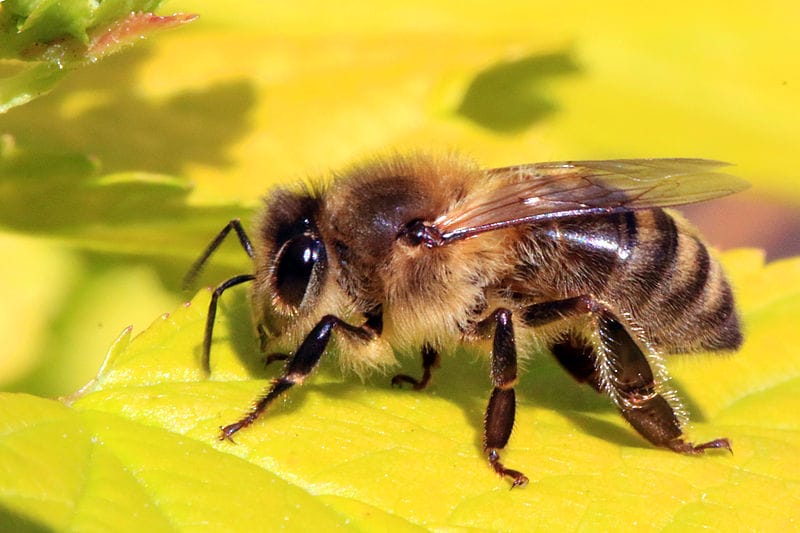
People think that honeybees are endangered, and that we need more of them. Well, honeybees are not endangered. They are a farmed, introduced species originally from Asia who live in man-made beehives and produce honey for us to eat. There are millions of them everywhere! They compete with wild bees and other insects for pollen and nectar.
In urban areas there is a worry that there are too many beehives and not enough flowers to feed them, and our wild bees (and other wild insects). Some beekeepers, to be fair, are starting to understand this and are pushing for regulation and a planned approach to beekeeping, with a limit on the number of hives in a particular area.
So, we should think of honeybees as we think about hens, or cows. As fascinating as their social structure is, they are not wild animals.
If you are interested in the honeybee problem, watch this balanced talk on the subject from the excellent Entolive series.
Asian hornet
The Asian hornet, which is causing a lot of alarm in the newspapers at the moment, is another species that humans have introduced to this country (inadvertently through cargo). In the wild the Asian hornet feeds on, you’ve guessed it – honeybees! But the Asian hornet also eats wasps and other wild bees, so it is not a welcome visitor here. Although I have to confess, it is rather beautiful.
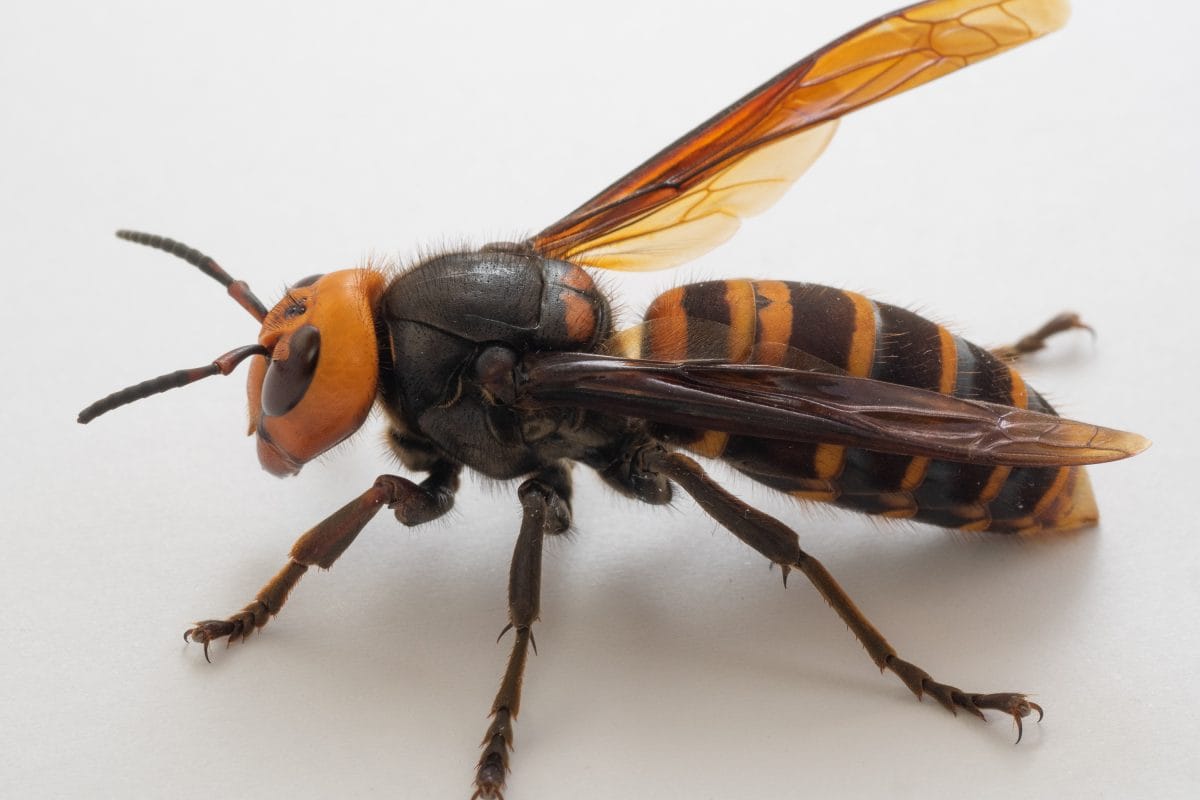
The Asian hornets arriving in the UK are delighted to see hives full of their favourite food -although the beekeepers are not so happy to see them. This little story illustrates what problems we create when we move animals round the world, either deliberately in the case of honeybees, or accidentally in the case of Asian hornets.
If you see an Asian hornet – you can report it, ideally with a photo, to track them.
Right, that’s honeybees (and Asian hornets) out of the way. Now, what about the proper, wild bees? These are the ones who are doing badly and do need our help.
First, we need to be clear about what is a bee and what is not a bee.
Identifying bees
Is this a bee?
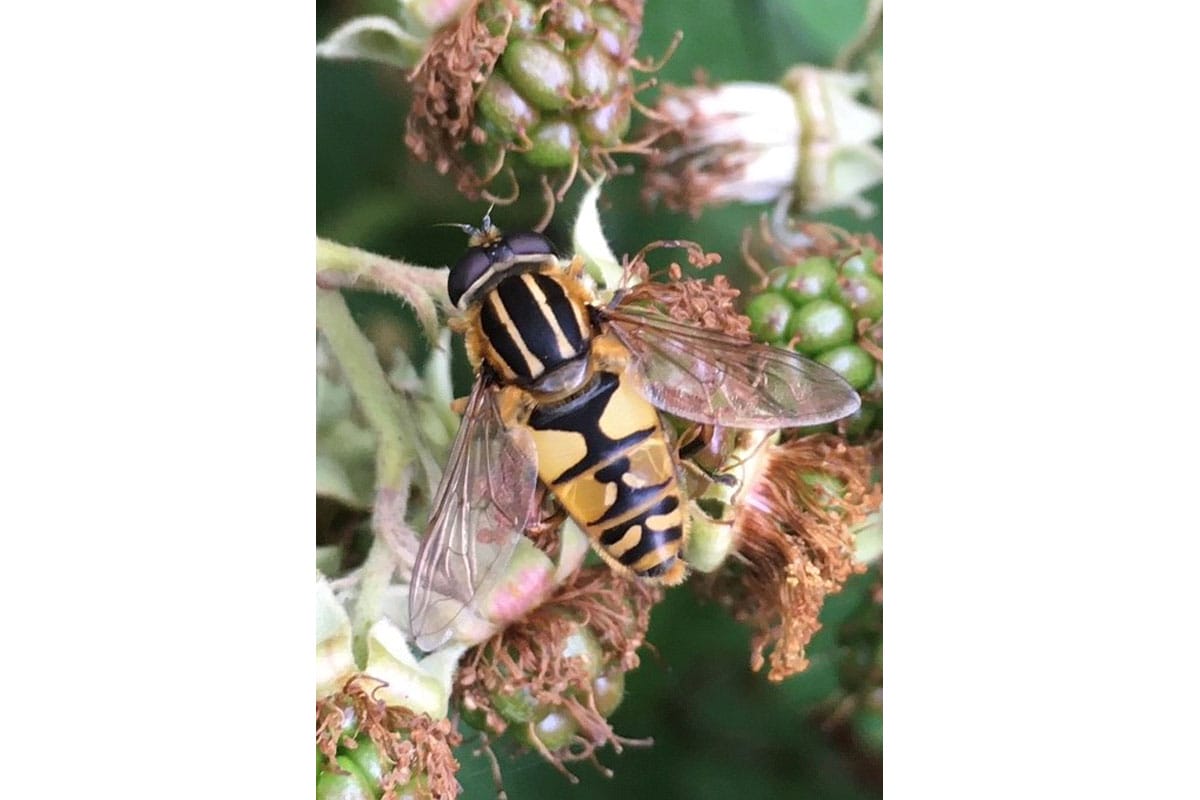
No!
Why? Look at those massive eyes which meet in the middle of the head; only flies have these eyes. And she only has two wings. Bees have four, although the two sets are hooked together so it can be hard to pick this up. Lastly, she’s less hairy than a bee.
So, not a bee. This is one of our most common hoverflies – Helophilus pendulus. She is beautiful, but not a bee!
How about this one?
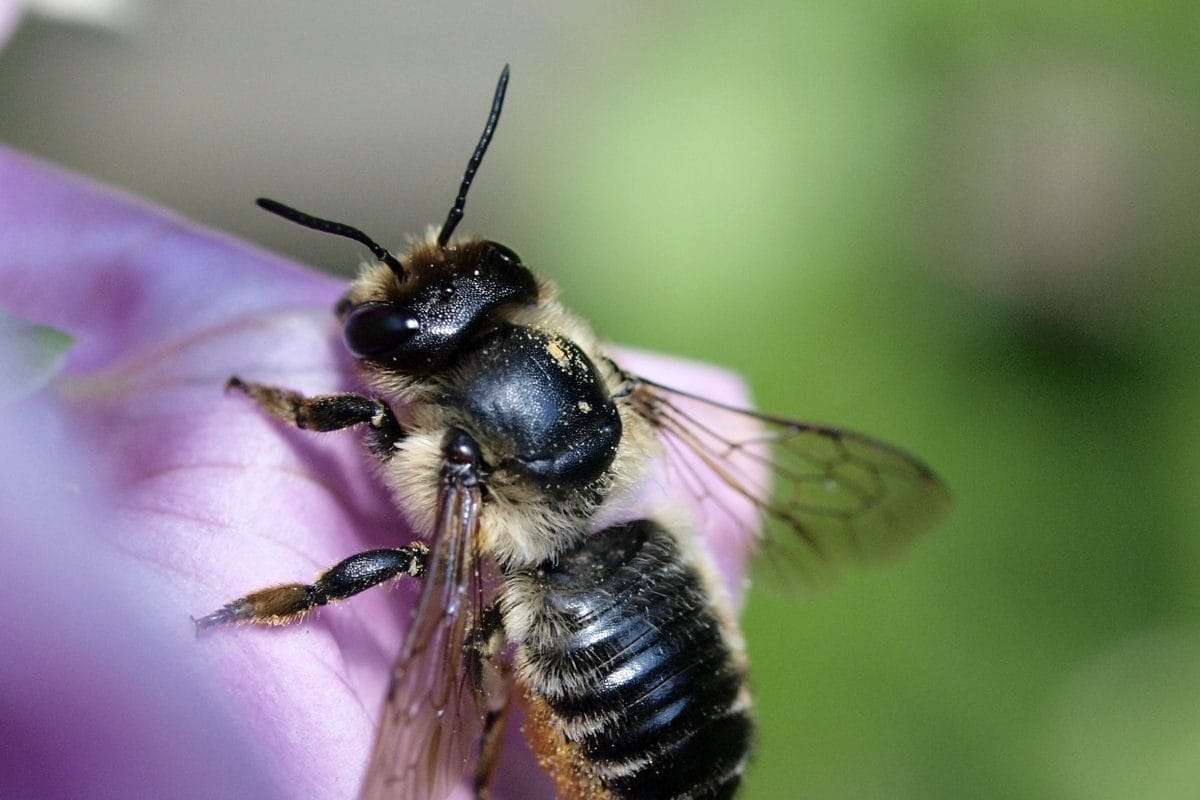
I hope you can see this insect has much smaller eyes than the fly, and a hairy body. This is a bee.
You might be thinking, “But he is not cuddly and stripey, nor yellow and black”.
Well, most bees are not!
Most bee species (244 of them to be precise) in the UK are solitary bees, who don’t nest communally, don’t make honey and are often not that brightly coloured. So, most people overlook them, which is sad, as they are gorgeous.
This one is a leafcutter bee (Megachile genus). I found him, appropriately enough, in the Horniman Bee Garden last year.
Here are two more solitary bees – a grey-patched mining bee, and an orange tailed mining bee, and both photographed in the Horniman Triangle Play Park across the road (not part of the Horniman Gardens), although I have seen both on the Nature Trail too.

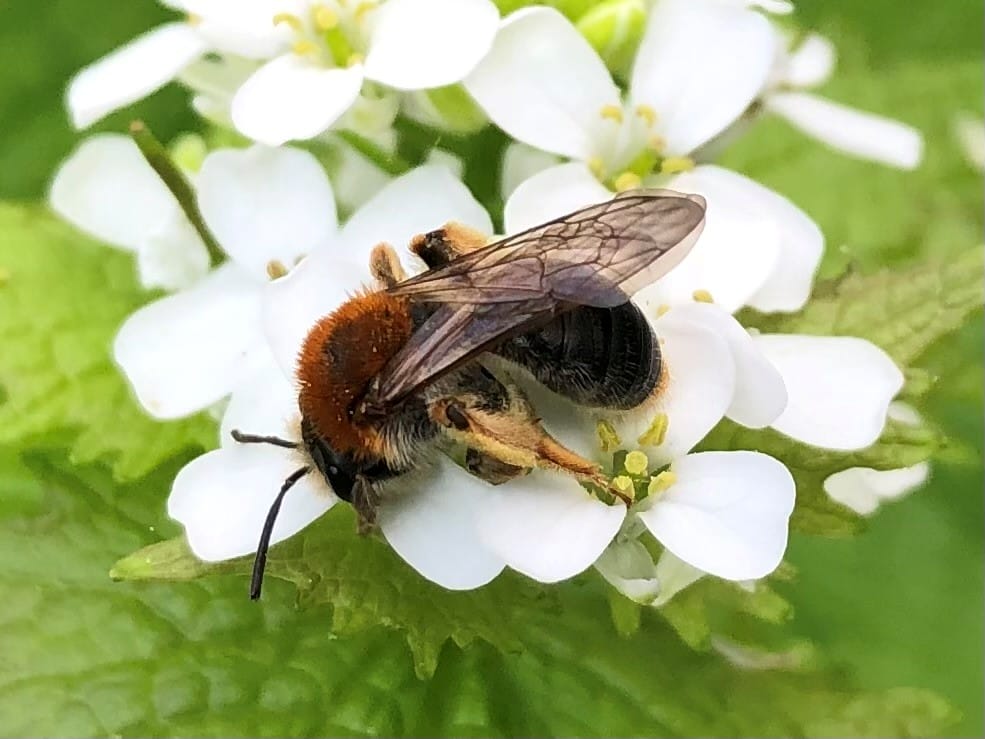
It’s easy to overlook these solitary bees, on a superficial glance we can often write them off as honeybees.
Always take a closer look at those things you think are honeybees. Solitary bees are the bees we try to encourage to nest in bee hotels (although personally I have never had any luck with this). But if you look in the Horniman bee hotel in the Bee Garden in early spring you can see the little holes plastered up, each hole containing a set of bee larvae, each in their own little cell with a pile of pollen for food, waiting to emerge as adults next spring.
Now, who is this?

Yes! That’s more like it, you are thinking. This is what we think of when we think “bee” – a big fat cuddly queen buff tailed bumblebee. Note the buff tail and golden stripes.
Bumblebees are fluffy, and fat looking. They are thought to have evolved in the Himalayas 30 million years ago, so they might do badly with climate change sadly. But the Bumblebee Conservation Trust (BBCT) are doing their bit to help them.
The BBCT want to get more people in east London, Bromley and Lewisham doing bee surveys. Areas of urban grassland, and especially wasteland and brownfield sites which were once built on but are now overgrown, are perfect habitats for our very rare bumblebees – they attract the shrill carder, moss carder, red-shanked carder and brown banded carder bees, as well as being magnets for other rare insects.
There is a myth that areas considered urban and a wasteland are bad for wildlife. Much of our countryside is in decline for insects, damaged by intensive farming and over-use of pesticides, which makes road verges, gardens in towns and cities, parks, nature reserves and wasteland areas even more important for our insects.
Where can I learn more?
I’d recommend start with bumblebees, as there’s only seven common ones to learn. First, look at the BBCT website where you watch bee ID videos, and perhaps even buy a little fold out guide you can put in your pocket to help you identify those bumblebees you see on your walk to the shops.
What can I do to help bees?
- When you’ve got the hang of identifying the common bumblebees, why not sign up for a monthly Bee Walk survey with the BBCT. There is training and support available, and it’s an excellent way to practice your skills.
- Lewisham is an under-surveyed area, so do think if you might do a Bee Walk in your local green space, nature reserve or park.
- Think about your garden, whether it’s your own or a communal garden. Could you make it better for insects by either letting it grow wild and cutting it back at the end of summer? Or if you’ve got bare earth, think about planting wildflower seeds in the autumn – such as foxglove, thyme, comfrey, wild carrot, clover and white deadnettle.
- And please do not pull up dandelions or other related yellow flowers! They are one of the most important urban flowers for insects, as the picture of the grey-patched mining bee above illustrates.
- You can get seeds from lots of places. Companies like Plantlife are also a plant charity so a good place to start.
In the meantime, get out and find some bees!


